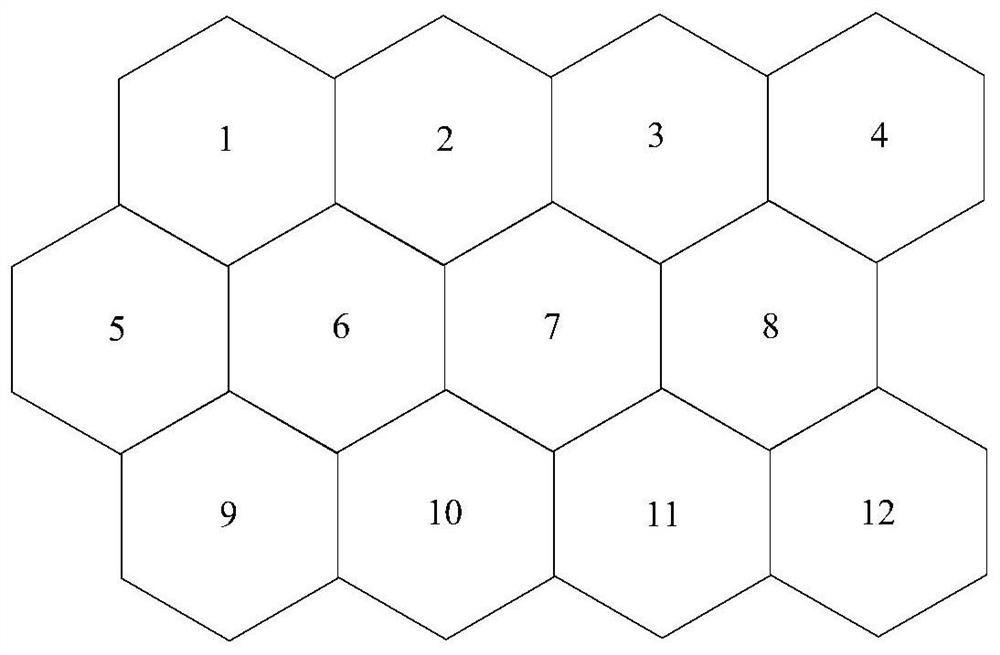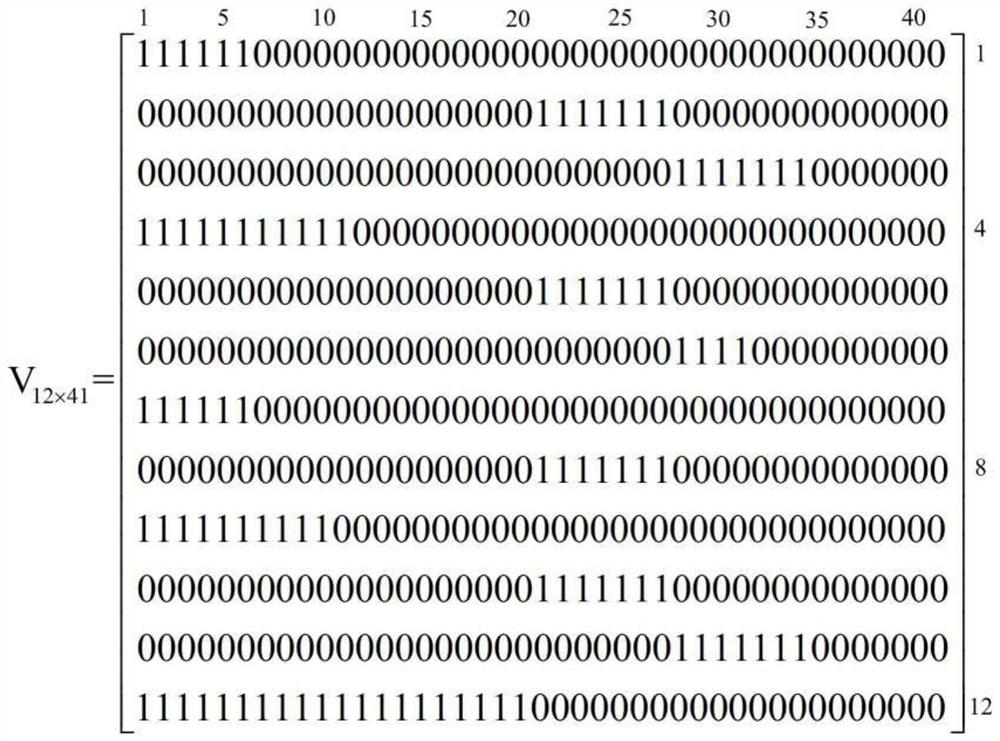A dynamic channel allocation method for ofdma cellular networks
A dynamic channel allocation and cellular network technology, applied in data exchange network, transmission monitoring, digital transmission system, etc., can solve the problems of rising blocking rate, large calculation delay, large calculation amount, etc., and achieve the reduction of cell scale and channel scale , the effect of reducing the amount of calculation
- Summary
- Abstract
- Description
- Claims
- Application Information
AI Technical Summary
Problems solved by technology
Method used
Image
Examples
Embodiment Construction
[0026] The method for dynamic channel assignment of the OFDMA cellular network, the implementation steps are as follows:
[0027] Step (1), color the cells in the cellular network with three colors A, B, and C, so that the coloring of adjacent cells is different, and then find 3 according to the number of channels required for each cell in the cellular network Adjacent to each other, the sum of the number of channels is the largest A color, B color, and C color cells, and use a, b, and c to represent the number of channels required by these three cells.
[0028] This embodiment is mainly aimed at figure 1 The cellular network shown performs OFDMA channel allocation, figure 1 The shown cellular network contains 12 cells, assuming that the OFDMA channel demand of each cell is 6, 10, 9, 11, 12, 4, 6, 7, 10, 9, 7, that is, the channel demand vector N x =[6, 10, 9, 11, 12, 4, 6, 7, 10, 9, 7, 20]. Use A, B, C three color pairs figure 1 For coloring, the result is as follows fi...
PUM
 Login to View More
Login to View More Abstract
Description
Claims
Application Information
 Login to View More
Login to View More - Generate Ideas
- Intellectual Property
- Life Sciences
- Materials
- Tech Scout
- Unparalleled Data Quality
- Higher Quality Content
- 60% Fewer Hallucinations
Browse by: Latest US Patents, China's latest patents, Technical Efficacy Thesaurus, Application Domain, Technology Topic, Popular Technical Reports.
© 2025 PatSnap. All rights reserved.Legal|Privacy policy|Modern Slavery Act Transparency Statement|Sitemap|About US| Contact US: help@patsnap.com



